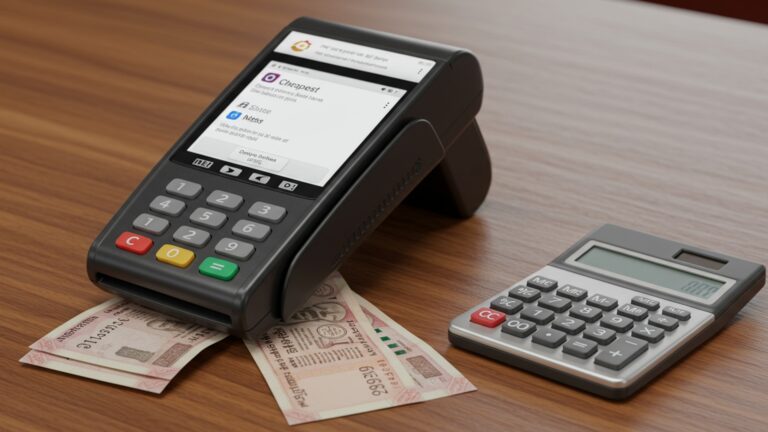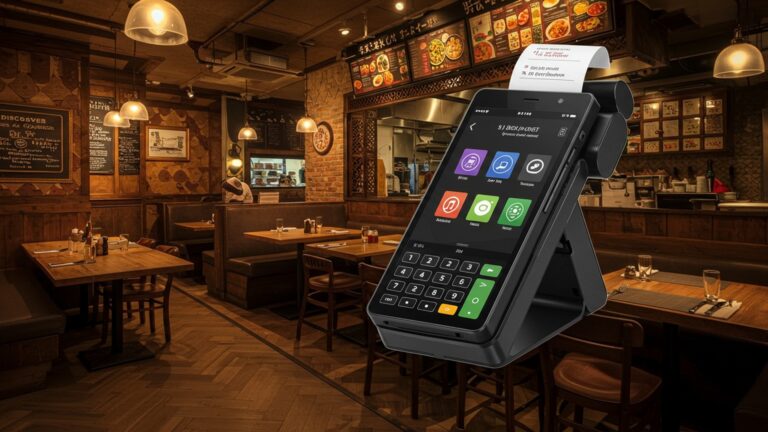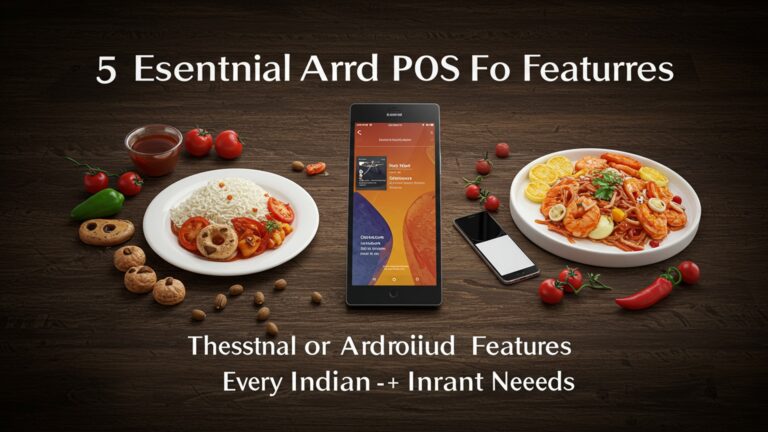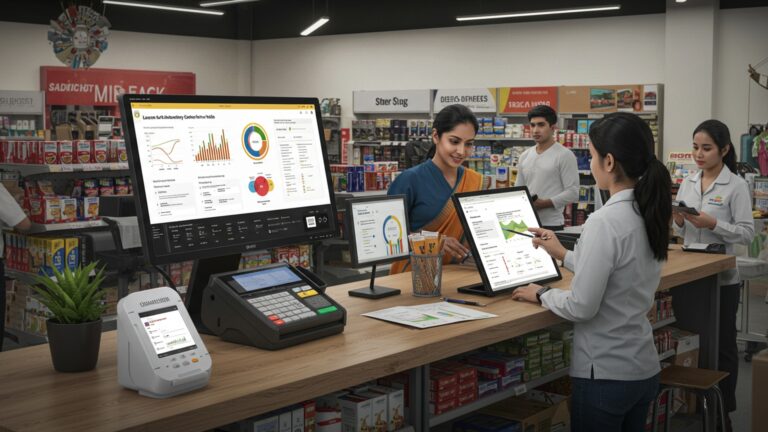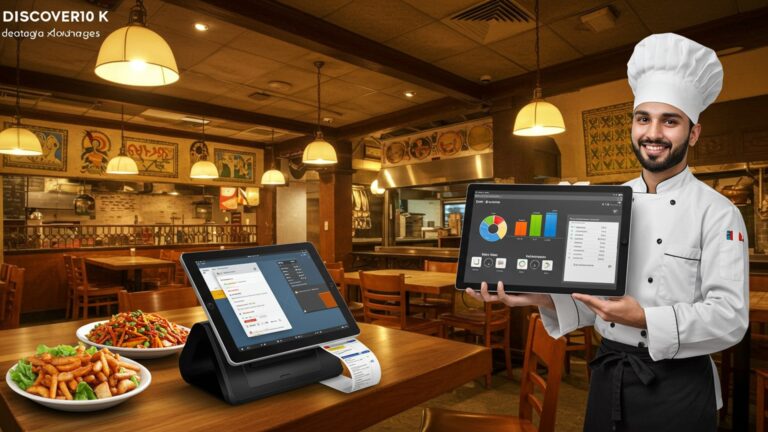Master 5 Best POS Software Solutions for Cloud Kitchens in India
The Indian culinary landscape is rapidly redefining itself with the explosive growth of cloud kitchens, transforming traditional restaurant models into lean, delivery-focused operations. This paradigm shift, fueled by platforms like Swiggy and Zomato, presents unique operational complexities: managing multiple virtual brands, diverse menus, dynamic inventory. seamless integration with various delivery aggregators. Navigating these challenges efficiently demands more than just basic billing; a specialized POS software for cloud kitchens India becomes the indispensable technological backbone. It empowers operators to streamline order aggregation, optimize kitchen workflows, control inventory in real-time. leverage data analytics for scalable growth, directly impacting profitability in a highly competitive market.
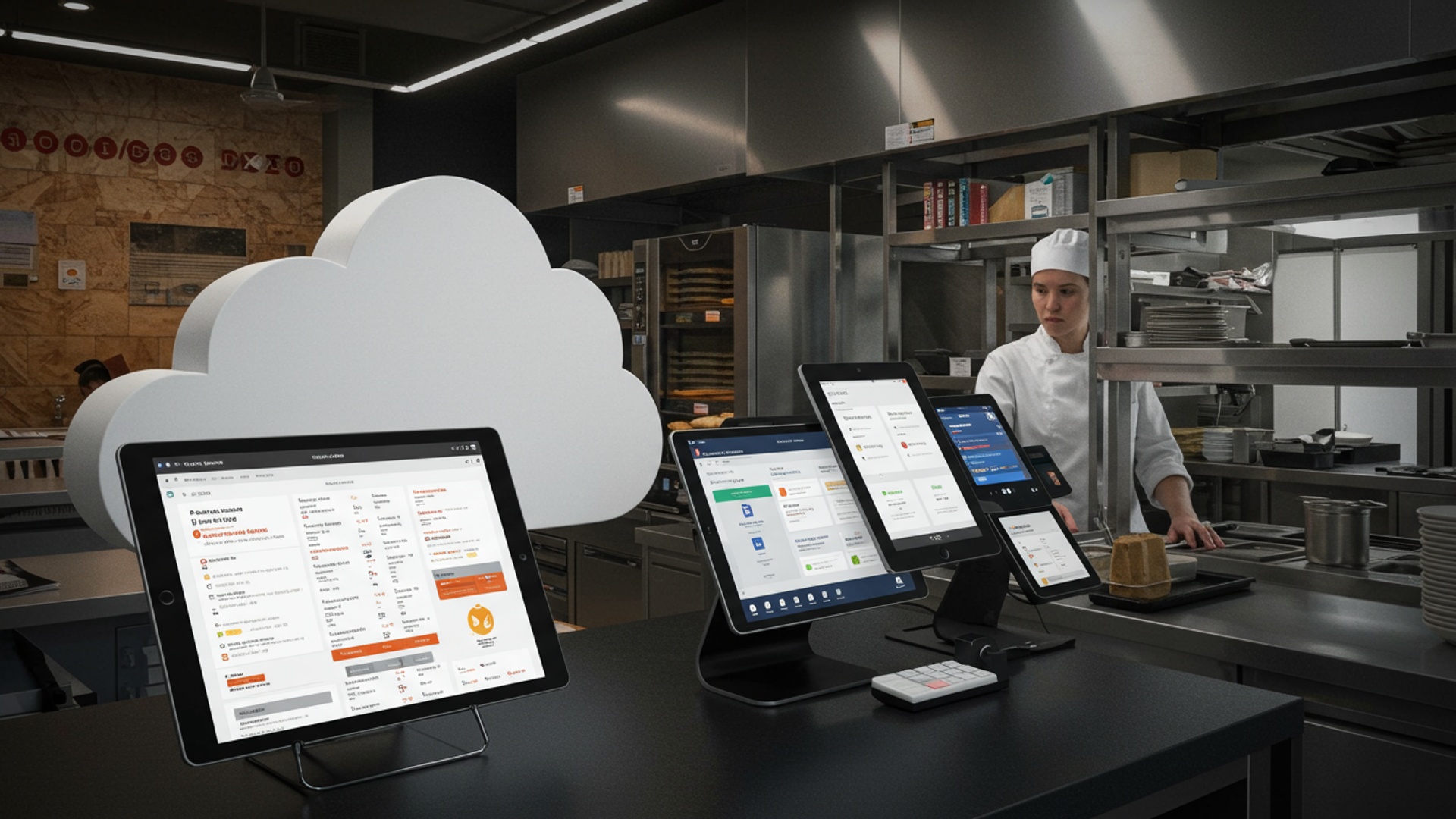
Understanding the Cloud Kitchen Revolution and the Role of POS Software
The culinary landscape in India has undergone a seismic shift with the rise of cloud kitchens, also known as ghost kitchens or virtual restaurants. These are food businesses that operate solely for delivery, without a physical dining space. They leverage online ordering platforms and delivery services, focusing entirely on efficient food preparation and timely dispatch. This model offers significant advantages, including lower overheads (no front-of-house staff, reduced rent), greater flexibility in menu experimentation. the ability to scale rapidly across multiple locations or brands from a single kitchen.
But, this unique operational model presents its own set of challenges, particularly in managing the complex flow of orders from various online aggregators, maintaining real-time inventory. ensuring seamless kitchen operations. This is where a specialized POS software for cloud kitchens India becomes not just an advantage. an absolute necessity. Traditional Point-of-Sale (POS) systems, designed for dine-in restaurants with a single order stream, simply cannot cope with the multi-channel, high-volume. data-intensive environment of a modern cloud kitchen. A robust cloud kitchen POS acts as the central nervous system, orchestrating every aspect from order reception to delivery handover.
Key Features to Look for in Cloud Kitchen POS Software
Selecting the right POS software for cloud kitchens India requires a deep understanding of the specific functionalities that drive efficiency and profitability in this unique business model. Here are the critical features to prioritize:
- Multi-Channel Order Aggregation
This is arguably the most crucial feature. Cloud kitchens receive orders from numerous platforms like Swiggy, Zomato, Dunzo, Magicpin. often their own websites/apps. The POS must centralize all these orders into a single interface, eliminating the need to juggle multiple tablets and reducing manual errors.
// Hypothetical API integration concept for order aggregation function aggregateOrder(platform, orderData) { console. log(`Receiving order from ${platform}:`, orderData); // Process orderData, normalize fields. push to central queue return processOrder(orderData); }
Accurate, real-time tracking of ingredients is vital to prevent stockouts, minimize waste. control food costs. The software should allow for recipe management, automatic deduction of ingredients per order. alerts for low stock levels.
A digital KDS replaces paper-based orders, displaying incoming orders to kitchen staff on screens. It helps prioritize orders, track preparation times. improves communication between different kitchen sections (e. g. , starters, main course, desserts). This significantly boosts kitchen efficiency and reduces order errors.
Data is gold for cloud kitchens. The POS should provide comprehensive reports on sales, popular dishes, peak hours, delivery performance, food costs. customer behavior. These insights are essential for menu optimization, marketing strategies. operational improvements.
While cloud kitchens don’t have physical customer interaction, understanding customer preferences and order history is crucial. A good POS can capture customer data, segment them. facilitate targeted promotions, loyalty programs. feedback collection.
The effectiveness of a POS multiplies with its ability to integrate with other essential tools:
- Payment Gateways
- Delivery Management Systems
- Accounting Software
- Third-Party APIs
For processing direct orders.
For assigning and tracking delivery riders efficiently.
For streamlined financial reconciliation.
For custom integrations or future expansions.
As cloud kitchens often expand into multiple brands or locations, the POS must be able to manage all outlets from a central dashboard, providing a unified view of operations and reporting.
The ability to monitor sales, inventory. operations from a smartphone or tablet offers immense flexibility for owners and managers on the go.
The Top 5 POS Software Solutions for Cloud Kitchens in India
Navigating the diverse market of POS software for cloud kitchens India can be challenging. Here are five leading solutions that have proven instrumental for cloud kitchen success:
Petpooja
Petpooja is a highly popular and comprehensive restaurant management platform in India, widely adopted by cloud kitchens due to its robust order aggregation capabilities. It’s known for its user-friendly interface and extensive integration ecosystem.
- Key Features
- Pros
- Cons
- Target User/Best Fit
- Real-world Application
Multi-platform order aggregation (Swiggy, Zomato, etc.) , advanced inventory management with recipe mapping, KDS, detailed sales and cost analytics, CRM, billing. native integrations with payment gateways and delivery partners.
Excellent aggregator integration, strong reporting, good customer support, suitable for managing multiple brands/outlets. Many cloud kitchen operators praise its ability to streamline order flow from diverse sources.
Can be feature-rich, potentially leading to a steeper learning curve for new users. Pricing might be on the higher side for very small operations, though justified by its feature set.
Cloud kitchens of all sizes looking for an all-in-one solution with strong aggregator integration and scalability.
A cloud kitchen running five different virtual brands (e. g. , a burger brand, an Indian cuisine brand, a healthy bowls brand) from a single kitchen can use Petpooja to consolidate all orders from Swiggy, Zomato. their own website into one KDS, ensuring efficient preparation and dispatch for each brand.
UrbanPiper
UrbanPiper specializes in solving the aggregator integration challenge, acting as a middleware that connects your POS to all major online food aggregators. While not a full-fledged POS itself, many leading POS systems integrate with UrbanPiper to leverage its channel management prowess.
- Key Features
- Pros
- Cons
- Target User/Best Fit
- Real-world Application
Centralized menu management across all aggregators, real-time order push to your chosen POS/KDS, analytics on aggregator performance, automated order acceptance/rejection rules. robust API for custom integrations.
Unparalleled expertise in aggregator management, reduces manual errors significantly, ensures menu consistency across platforms. offers critical insights into platform performance. Many cloud kitchens use UrbanPiper with their existing POS to supercharge their online order flow.
Primarily an integration layer, not a standalone POS. Requires integration with another POS system for complete functionality.
Cloud kitchens heavily reliant on online food aggregators, seeking to streamline order flow and menu management efficiently.
A cloud kitchen owner who uses a basic POS for internal billing and inventory can integrate UrbanPiper to manage all their Swiggy, Zomato. DotPe orders, pushing them directly into their existing POS or KDS without manual intervention.
POSist
POSist is a widely recognized enterprise-grade restaurant technology platform that offers comprehensive solutions for various restaurant formats, including cloud kitchens. It’s known for its powerful analytics and automation capabilities.
- Key Features
- Pros
- Cons
- Target User/Best Fit
- Real-world Application
End-to-end cloud kitchen management, extensive integrations with aggregators and delivery partners, advanced inventory control with waste management, detailed sales forecasts and analytics, loyalty programs. multi-store management. Its KDS is highly customizable.
Very robust and scalable, excellent for multi-brand/multi-outlet operations, strong reporting and analytics, good automation features. Offers a complete ecosystem for growth.
Can be more expensive than some competitors. The extensive feature set might require more time for initial setup and training.
Growing cloud kitchen chains, multi-brand cloud kitchens. those looking for a comprehensive, enterprise-level solution that can scale with their business.
A cloud kitchen group operating across multiple cities in India can utilize POSist’s central dashboard to monitor sales, inventory. staff performance for all their brands and locations, ensuring consistent quality and operational efficiency.
LimeTray
LimeTray offers a full stack of solutions for restaurants, with a strong focus on online presence and delivery. Their POS is well-suited for cloud kitchens that want to build a strong direct-to-consumer channel alongside aggregator presence.
- Key Features
- Pros
- Cons
- Target User/Best Fit
- Real-world Application
Integrated online ordering website/app, table management (though less relevant for cloud kitchens), robust CRM, marketing tools (SMS/email campaigns), inventory management, KDS. integrations with aggregators and payment gateways.
Strong emphasis on direct online ordering channels, good CRM and marketing capabilities, helps build brand loyalty, comprehensive suite of tools for digital presence.
While strong, its aggregator integration might not be as deeply specialized as UrbanPiper’s, though still highly effective.
Cloud kitchens looking to diversify beyond aggregators, build their own online brand. directly engage with customers through their own ordering platforms.
A cloud kitchen aiming to reduce dependency on aggregator commissions can leverage LimeTray to set up its own branded website and app for direct orders, managing these alongside aggregator orders through the same POS system.
SlickPOS
SlickPOS is a cloud-based POS system designed to be intuitive and affordable, making it an attractive option for startups and smaller cloud kitchens in India. It focuses on simplicity without compromising core functionalities.
- Key Features
- Pros
- Cons
- Target User/Best Fit
- Real-world Application
Billing, inventory management, customer management, basic reporting, KDS. integration with popular online ordering platforms and payment gateways. It aims for a straightforward user experience.
Affordable, easy to set up and use, cloud-based access from anywhere, good for basic cloud kitchen operations, responsive customer support.
May lack some of the advanced analytics or deep integration capabilities found in more enterprise-grade solutions like POSist or Petpooja.
New cloud kitchen ventures, single-brand cloud kitchens, or those with budget constraints looking for an effective and user-friendly POS software for cloud kitchens India.
A budding cloud kitchen owner launching their first virtual brand can use SlickPOS to manage their daily orders from Swiggy/Zomato, track basic inventory. generate simple sales reports without a significant upfront investment or steep learning curve.
Comparing the Top POS Solutions
Here’s a comparative overview of the leading POS software for cloud kitchens India, highlighting their key strengths:
| Feature / Software | Petpooja | UrbanPiper | POSist | LimeTray | SlickPOS |
|---|---|---|---|---|---|
| Aggregator Integration | Excellent (Native) | Exceptional (Specialized Middleware) | Very Good (Native) | Very Good (Native) | Good (Native) |
| Inventory Management | Advanced (Recipe Mapping) | N/A (Integration layer) | Advanced (Waste Management) | Good | Basic |
| Kitchen Display System (KDS) | Yes, Feature-rich | Yes (via POS integration) | Yes, Highly Customizable | Yes | Yes, Basic |
| Reporting & Analytics | Comprehensive | Aggregator-focused | Enterprise-grade, Predictive | Good, Marketing-focused | Basic Sales & Cost |
| CRM & Marketing | Good | N/A | Robust Loyalty Programs | Strong (Direct Order Focus) | Basic Customer Data |
| Pricing Model (General) | Subscription-based (Mid-High) | Subscription-based (Varies by volume) | Subscription-based (High) | Subscription-based (Mid) | Subscription-based (Low) |
| Best For | All-in-one solution, multi-brand | Aggregator-heavy operations, integration with existing POS | Large chains, advanced analytics | Direct online ordering, brand building | Startups, budget-conscious, ease of use |
Implementing POS Software in Your Cloud Kitchen: Actionable Steps
Once you’ve chosen the ideal POS software for cloud kitchens India, successful implementation is key to maximizing its benefits. Here are actionable steps:
- Assess Your Specific Needs
- Vendor Selection and Demo
- Data Preparation and Migration
- Staff Training
- Phased Rollout and Testing
- Go-Live and Post-Implementation Support
- Leverage Analytics for Continuous Improvement
Before even selecting, conduct a thorough audit of your current operational bottlenecks. What are your biggest pain points? Is it order aggregation, inventory control, or lack of data? This clarity will guide your choice and implementation strategy.
Don’t just rely on online reviews. Request personalized demos from your shortlisted vendors. Ensure their solution addresses your unique requirements. ask about their customer support, uptime guarantees. future roadmap.
Prepare your menu items, pricing, inventory lists. supplier details. If migrating from an existing system, ensure data can be exported in a compatible format. Work closely with the POS vendor’s support team for a smooth migration.
// Example of data structure for menu item import { "itemName": "Butter Chicken", "category": "Main Course", "price": 320. 00, "ingredients": [ {"name": "Chicken", "quantity": "200g"}, {"name": "Butter", "quantity": "20g"}, {"name": "Tomato Puree", "quantity": "100g"} ], "isActive": true }
Your team is your greatest asset. Provide comprehensive training to all staff members who will interact with the POS – from order takers to kitchen staff using the KDS. managers accessing reports. Hands-on training with real-world scenarios is most effective.
Instead of a full-scale launch, consider a phased rollout. Perhaps start with one virtual brand or during off-peak hours to identify and resolve any issues. Rigorously test order flow from aggregators, inventory deductions. reporting accuracy.
Have the vendor’s support team on standby during your initial go-live period. Establish clear channels for reporting issues and getting assistance. Regular check-ins and feedback sessions with your team can help optimize usage.
Don’t just use the POS for transactions. Dive deep into its reporting features. Identify best-selling items, assess peak ordering times, track food waste. comprehend customer preferences. Use these insights to refine your menu, optimize staffing. target marketing efforts effectively. For instance, if analytics show a dip in orders on Tuesdays, you might consider running a targeted promotion for that day.
The Future of POS in Cloud Kitchens: Trends to Watch
The evolution of POS software for cloud kitchens India is continuous, driven by technological advancements and changing consumer expectations. Here are some key trends shaping its future:
- Artificial Intelligence (AI) and Machine Learning (ML) for Demand Forecasting
- Advanced Robotics and Automation Integration
- Hyper-Personalization and Predictive Customer Experience
- Voice Ordering and Conversational AI
- Enhanced Sustainability Features
- Blockchain for Supply Chain Transparency
Future POS systems will increasingly leverage AI/ML to predict demand based on historical data, weather patterns, local events. even social media trends. This will enable cloud kitchens to optimize inventory, reduce waste. manage staffing more effectively. Imagine a system that suggests precise ingredient quantities to order for the next week, factoring in an upcoming festival.
As automation becomes more prevalent in kitchens, POS systems will need to integrate seamlessly with robotic arms for repetitive tasks, automated fryers, or ingredient dispensers. The POS will act as the control hub, sending instructions to kitchen automation systems.
Beyond basic CRM, future POS will use AI to comprehend individual customer preferences at a granular level. It could suggest personalized menu items, predict their next order, or offer dynamic pricing based on their loyalty and purchasing habits, even for delivery-only interactions.
While still nascent, voice interfaces could become a significant ordering channel. Future POS systems will need to seamlessly process orders placed via smart speakers or voice assistants, directly integrating them into the kitchen workflow.
As environmental concerns grow, POS systems will offer more tools to track food waste, optimize packaging. even suggest sustainable sourcing options, providing data-driven insights to help cloud kitchens reduce their ecological footprint.
Though a more long-term vision, blockchain technology could be integrated into POS systems to provide immutable records of ingredient sourcing, ensuring transparency and authenticity for customers concerned about food origins.
Conclusion
Selecting the ideal cloud POS software is more than a technical decision for your Indian cloud kitchen; it’s a strategic move to future-proof your operations. As we’ve seen, the best solutions, like those discussed, seamlessly integrate with popular delivery platforms such as Zomato and Swiggy, a non-negotiable in today’s market. My personal tip is to prioritize systems offering robust multi-brand inventory management and real-time sales analytics. This allows you to optimize menus and manage stock across various virtual brands from a single dashboard, a critical feature I’ve observed in successful cloud kitchen ventures. Don’t just look at the upfront cost; consider the long-term return on investment in terms of reduced order errors, faster delivery times. improved customer satisfaction. Investing in a scalable, data-driven POS system empowers you to not only streamline daily tasks but also to make informed decisions that drive profitability and expansion. Embrace this technology with confidence. watch your cloud kitchen business flourish amidst India’s competitive culinary landscape. For further insights into integrating your systems, explore Your Complete Guide to Integrated Billing and POS Software.
More Articles
How to Master Cloud POS Software for Seamless Business Operations
How to Leverage Cloud Based POS Software for Scalable Business Growth
How to Optimize Your Restaurant with Smart POS Software Solutions
Uncover the Best POS Software in India for Small Businesses
FAQs
Why is a specialized POS system so crucial for a cloud kitchen in India?
Cloud kitchens operate differently from traditional restaurants, often without a physical dining area. A specialized POS system helps manage online orders from various platforms, track inventory across multiple brands, streamline kitchen operations. handle delivery logistics efficiently, which is crucial in a competitive Indian market.
What essential features should I look for in a cloud kitchen POS software?
You’ll want features like multi-brand management, seamless integration with major food aggregators (like Zomato, Swiggy), robust inventory and recipe management, real-time sales reporting, customer relationship management. an efficient KDS (Kitchen Display System) for order fulfillment.
Are these recommended POS solutions specifically designed for the Indian cloud kitchen market?
Yes, the top POS solutions for cloud kitchens in India are typically built with the local ecosystem in mind. This means they often have pre-built integrations with popular Indian food delivery apps, support for local payment gateways. features that address common operational challenges faced by Indian cloud kitchen businesses.
How do these POS systems help manage orders from multiple food delivery apps like Zomato and Swiggy?
A good cloud kitchen POS acts as a central hub. It integrates directly with various food aggregators, pulling all orders into a single interface. This eliminates the need to manage multiple tablets, reduces errors. ensures all orders are processed quickly and efficiently through your kitchen.
Can these POS solutions help me keep better track of my ingredients and control costs?
Absolutely. Advanced cloud kitchen POS software includes comprehensive inventory management. You can track ingredient usage, set up recipes, monitor stock levels in real-time, get alerts for low stock. generate reports that help identify wastage and optimize purchasing, leading to better cost control.
I run several virtual brands from one kitchen. Can these POS systems handle that?
Yes, multi-brand management is a core feature for cloud kitchen POS solutions. They allow you to manage orders, menus. inventory for multiple virtual brands from a single system, providing separate analytics and reporting for each brand while streamlining operations in your shared kitchen space.
What’s the main advantage of using a ‘cloud-based’ POS for my kitchen?
The ‘cloud-based’ aspect means your data and software are accessible online from anywhere, anytime. This offers flexibility, scalability. automatic updates without needing expensive on-site IT infrastructure. It also allows you to monitor your business remotely and ensures data security with regular backups.

